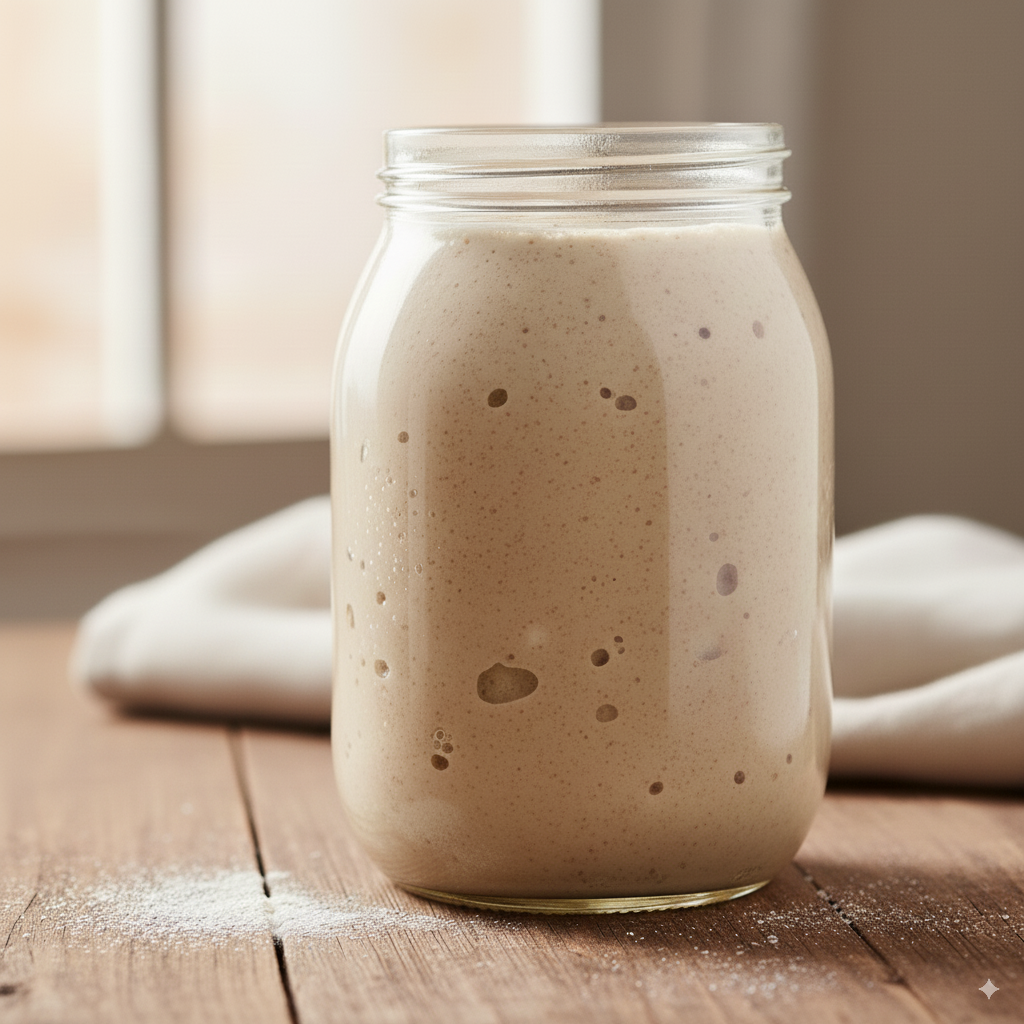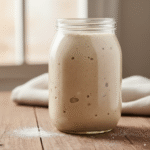Looking for a gluten free sourdough starter? A sourdough starter doesn’t need gluten to thrive. With just flour, water, and a little patience, you can grow a bubbly, living culture that powers delicious gluten free sourdough bread, pancakes, and more.
Whether you’re new to sourdough or switching from a traditional starter, this guide will walk you through what makes a gluten free sourdough starter unique, what flours work best, and how to keep it healthy for the long term.
Jump to RecipeWhat Makes a Gluten Free Sourdough Starter Different?
The main difference is in the flour. Traditional starters rely on wheat for its gluten structure, but gluten free sourdough starters use flours like:
- Brown rice flour – the most reliable, mild in flavor, and easy to find.
- Sorghum flour – slightly sweet and earthy, great for strength.
- Buckwheat or millet flour – more flavorful, but often blended with rice or sorghum.
Without gluten, the starter’s texture will feel looser and a bit more slurry-like than a wheat-based one. That’s completely normal. What matters most is activity: bubbles, rising, and a pleasantly tangy smell.
How Long Does It Take to Grow?
A gluten-free sourdough starter usually takes 5–7 days to fully mature. In the first few days, you might see a burst of activity that slows down before picking up again—don’t panic! Just keep feeding it consistently, and it will stabilize into a healthy culture.
Feeding and Care Tips
- Stick to a schedule: Feed your starter once every 24 hours at room temperature until it’s mature.
- Use filtered water: Chlorine in tap water can slow down fermentation.
- Don’t overthink discards: Tossing half before feeding keeps the balance of yeast and bacteria in check.
- Fridge storage: Once mature, store your starter in the fridge and feed it once a week if you’re not baking often.
Why Bother With a Gluten Free Sourdough Starter?
You could use commercial yeast, but a sourdough starter brings something extra:
- Flavor – complex, tangy notes that store-bought yeast can’t replicate.
- Digestibility – fermentation helps break down starches, making bread easier on the gut.
- Tradition – there’s something magical about nurturing a culture that can last for years.
Final Thoughts
Making a gluten-free sourdough starter is simpler than you might think. All you need is flour, water, and time—and soon you’ll have a thriving culture that can raise loaves, muffins, and even pizza crusts.
Gluten Free Sourdough Starter
Equipment
- A clean glass jar
Ingredients
- 60 g brown rice flour (or sorghum flour, or a mix)
- 60 g cup filtered or dechlorinated water
Instructions
Day 1:
- Mix 60g flour with 60g water in a clean jar. Stir well until smooth.
- Scrape down the sides, cover loosely (lid or cloth), and let sit at room temperature (70–75°F / 21–24°C) for 24 hours.
Day 2:
- Check for bubbles (it’s okay if you don’t see any yet).
- Discard half of the mixture. Add 60g fresh flour + 60g water. Stir, cover, and rest 24 hours.
Days 3–5:
- Repeat the process daily: discard half, feed with fresh flour + water.
- By Day 3 or 4, you should notice bubbles, tangy smell, and rising activity.
Day 5–7:
- Continue daily feedings. When your starter doubles in size within 4–6 hours of feeding and smells pleasantly sour, it’s ready to bake with!

